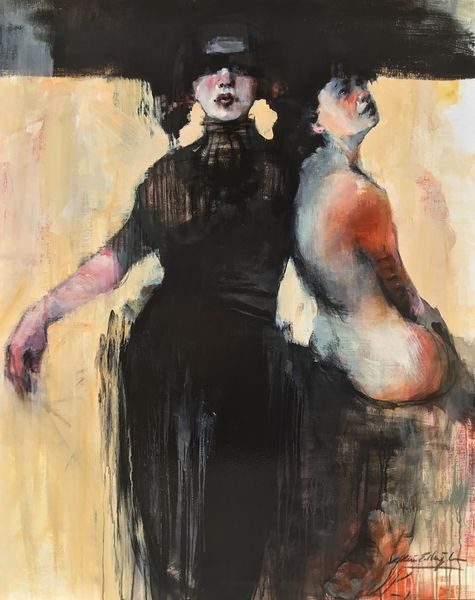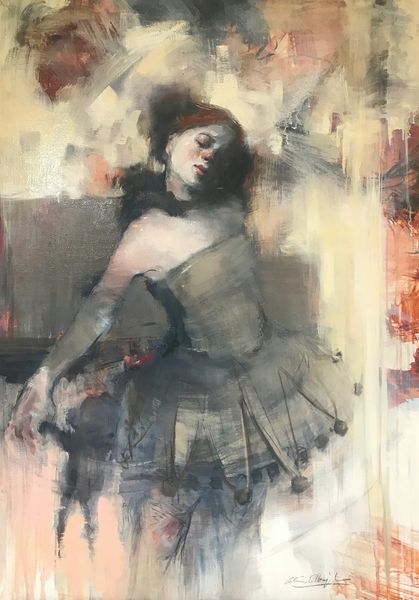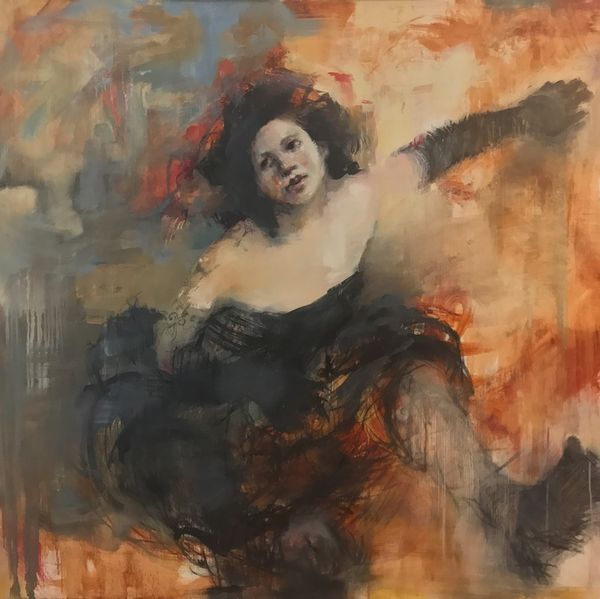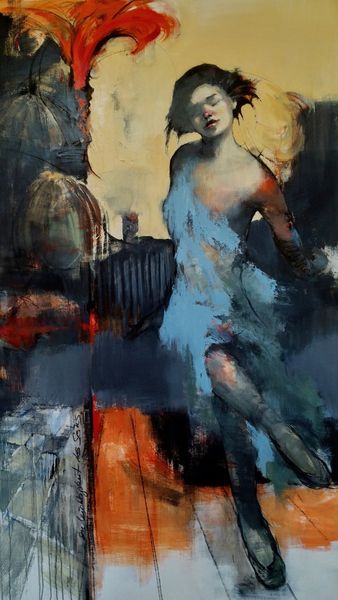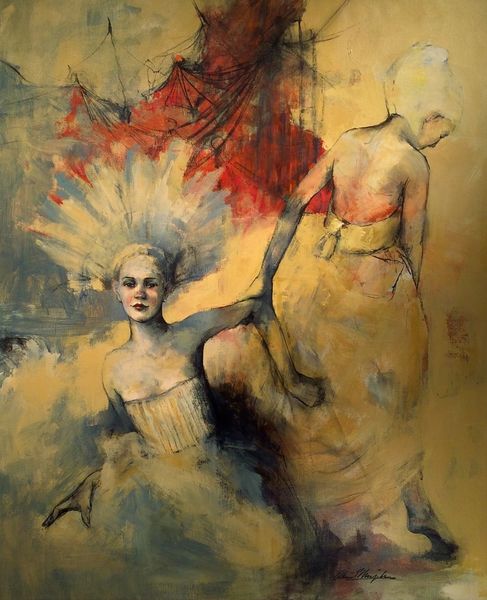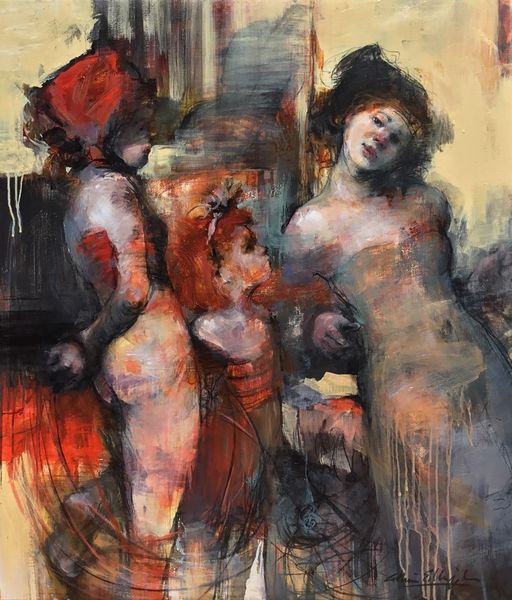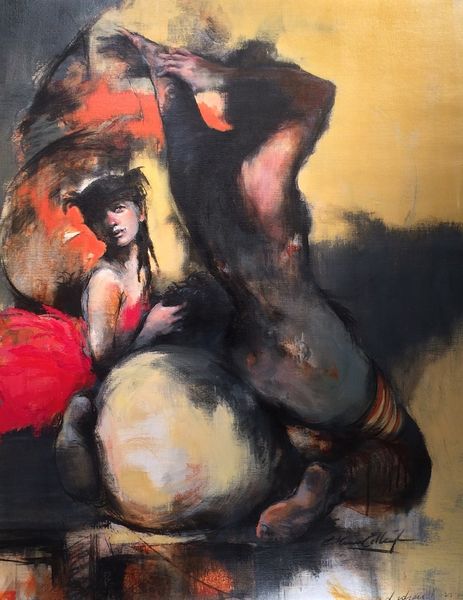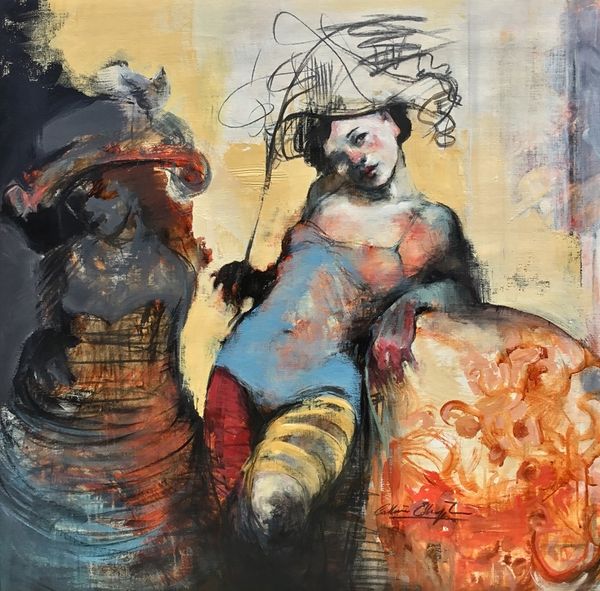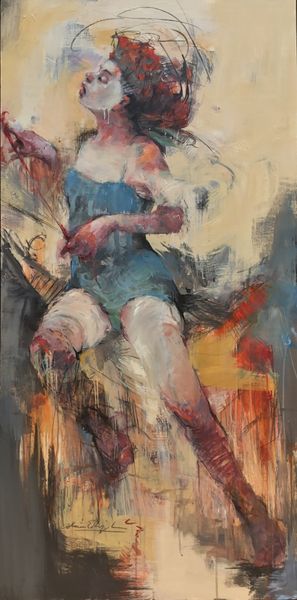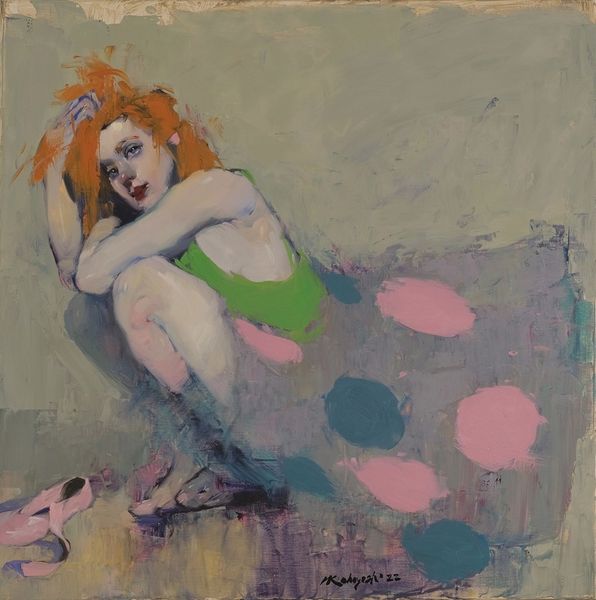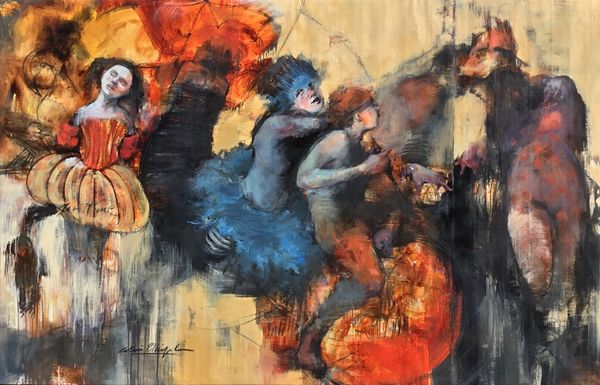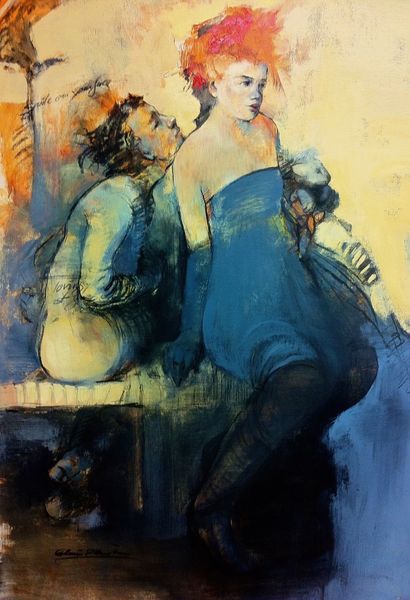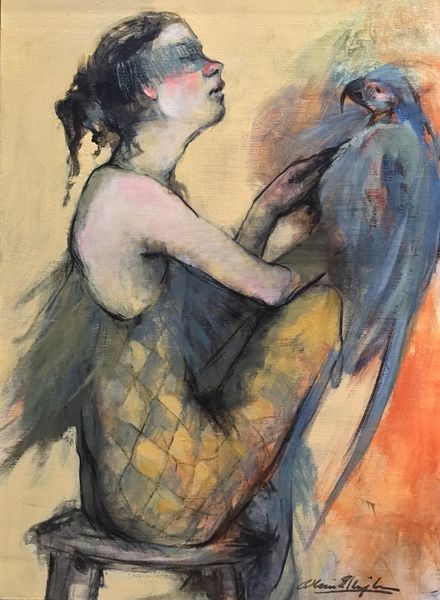
acrylic-paint, impasto
#
portrait
#
acrylic
#
acrylic-paint
#
figuration
#
oil painting
#
impasto
#
neo expressionist
#
acrylic on canvas
#
neo-expressionism
#
underpainting
#
nude
Copyright: Modern Artists: Artvee
Editor: So, here we have *Treasure Maps*, an acrylic on canvas piece. The artist and date are unknown. I'm immediately struck by the contrast between the two figures: one rendered with bold color, the other almost fading into the background. It feels like a conversation between presence and absence. How do you interpret this work? Curator: The deliberate ambiguity certainly sparks some questions, doesn’t it? The painting makes me think about how historical narratives are constructed and who gets to be present within them. The impasto strokes and the neo-expressionist style also indicate a concern with materiality, so what role do materials play? Editor: What do you mean by "role?" Curator: Well, think about it: oil paints were a signifier of quality artwork. What happens to their message when re-interpreted as acrylic, on canvas, using neo-expressionist gestural techniques in this contemporary moment? How might this play into its reception in the contemporary art world? Is there a statement about how images have the ability to change in our cultural understanding? Editor: I see! So, the materials and style choices aren't just aesthetic; they're a commentary on how art is valued and perceived. That makes me think about how the art world has historically favored certain kinds of representation and whose stories were told. It also brings the title into a totally new light as an examination of whose memories have been treasured by society, Curator: Precisely. And in this piece, consider how the stark difference between the vivid and ghostly figures suggests different levels of historical visibility, doesn't it? Or invisibility... And this "treasure map" perhaps refers to our pursuit of meaning in these incomplete narratives. Editor: I'm definitely looking at it differently now! The rough application of paint seemed expressive but I never considered the commentary it held. Curator: It highlights the fact that art is rarely just *art* and instead carries an undercurrent of historical influence on the audience. Editor: Right! I’ll never look at materials the same way. Curator: That is an excellent point to note, and I think we learned together.
Comments
No comments
Be the first to comment and join the conversation on the ultimate creative platform.
